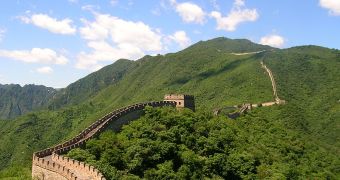A dozen small mines are wiping the Great Wall of China out the face of the Earth. Scientist said that current location of mines put the entire surface located 200 km away from Beijing in danger.
Its influence upon the outstanding monument is considerable, since some of the facilities are only 100 metres far from this remarkable Unesco World Cultural Heritage site.
It seems that inhabitants and non-profit organizations are already alarmed by the fact that a segment of 700 meters from the monument , created during Ming Dynasty (1573-1620) have already collapsed.
The process still continues since mines refused to stop their damaging activities.
The Great Wall's fascinating story began in 475 BC, when local people started its creation, as a way of protecting themselves against a potential invasion from northern tribes.
Nowadays, tourists can still enjoy the sight while exploring the 6,700 kilometres area which is occupied by the great construction.
The monument was created to reach and protect 8 strategic regions: Hebei, Tianjin, Beijing, Shanxi, Inner Mongolia, Shaanxi, Ningxia, and Gansu.
Despite the fact that previous damages to the Great Wall were reported in Inner Mongolia, scientists established that the area most affected by human intervention is Hebei, the region in which almost 20% of the monument faces the danger of turning itself into ancient history.
Other 70% of the entire construction surface seems to be suffering from the negative influence of mining, as it shows cracks and other noticeable signs of degradation.
"This section of the wall is considered 'the crust of the cream' of the Ming Dynasty Great Wall. It is really a pity," affirmed Guo Jianyong, a senior engineer at Ancient Architecture Studies Institute.
This is a classic case in which great achievements of historical value hide natural resources which generate a devastating fight for profit among large corporations and small businesses.
According to Zhou Jinjun, mining companies are well aware of the fact that the Great Wall covers considerable amounts of nickel, copper and iron.
Public opinion, scientists and organization that fight for environmental preservation were horrified when part of the great construction located in Hebei's Chongli County was completely wiped out, because mining companies had to create a new road.
Officials can't seem to be able to stop the expansion of devastating construction projects coming from mining enterprises, despite the fact that in 2006, the State Council came up with a regulation that limited the human influence in that particular area.
The real issue authorities are dealing with is the lack of funds,employees and proper equipment, which make them unable to perform activities at their maximum efficiency.
If the situation doesn't change in the near future, the Great Wall might turn into a great story with historical value.

 14 DAY TRIAL //
14 DAY TRIAL //